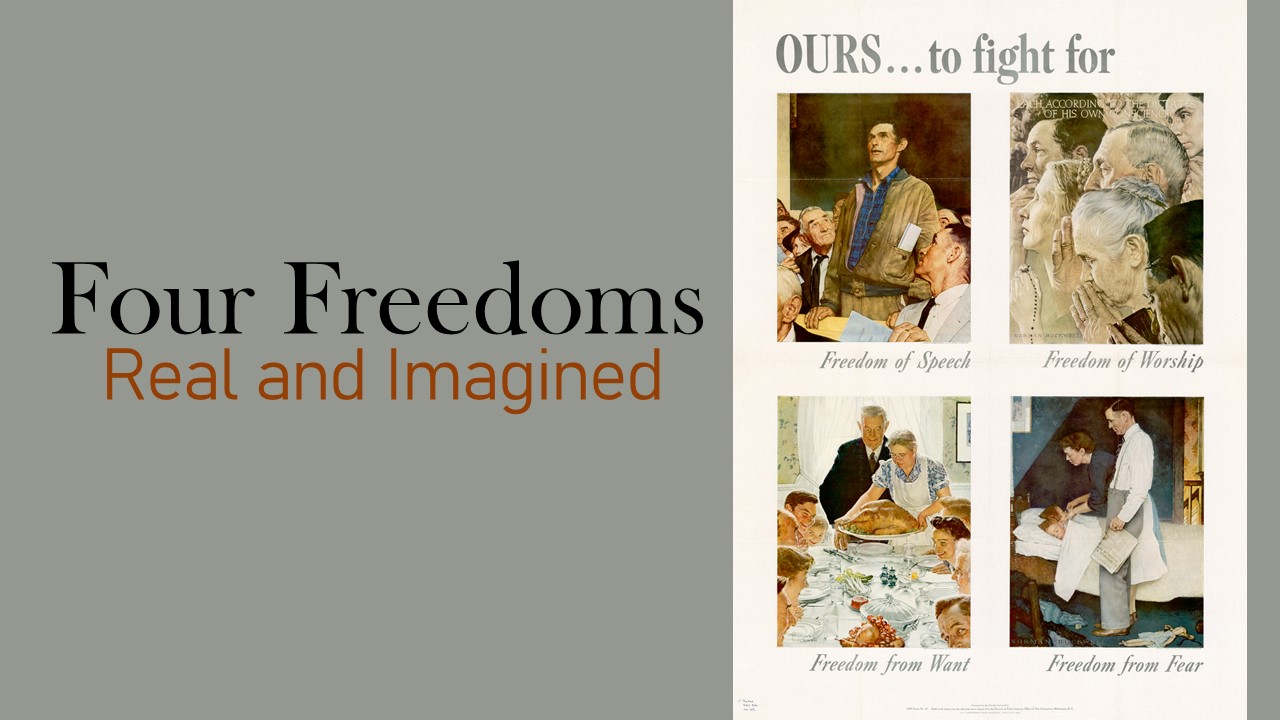
The four freedoms refer to President Franklin D. Roosevelt's “Four Freedoms Speech" delivered as the State of the Union Address in January, 1941. The speech identified essential human rights that should be universally protected: Freedom of Speech, Freedom of Worship, Freedom from Want, and Freedom from Fear. Each of the Freedoms were represented visually in paintings by American artist Norman Rockwell and reproduced as covers of The Saturday Evening Post over four consecutive weeks in 1943, alongside essays by prominent thinkers of the day. Rockwell's images highlighted the human aspect of the American war effort. The illustrations supported the effort by promoting war bonds, encouraging women to work, and men to enlist. They employed themes of patriotism, longing, shifting gender roles, reunion, love, work, community, and family.
Speech" delivered as the State of the Union Address in January, 1941. The speech identified essential human rights that should be universally protected: Freedom of Speech, Freedom of Worship, Freedom from Want, and Freedom from Fear. Each of the Freedoms were represented visually in paintings by American artist Norman Rockwell and reproduced as covers of The Saturday Evening Post over four consecutive weeks in 1943, alongside essays by prominent thinkers of the day. Rockwell's images highlighted the human aspect of the American war effort. The illustrations supported the effort by promoting war bonds, encouraging women to work, and men to enlist. They employed themes of patriotism, longing, shifting gender roles, reunion, love, work, community, and family.
Four Freedoms: Real and Imagined explores the idealized version of basic human rights alongside other objects and war posters showing the reality of wartime America in the 1940s.
This exhibition was conceived, curated, and installed by Westminster College Museum Studies students. It is made possible, in part, by the Anson Cutts Gallery Fund for America's National Churchill Museum.
“Leave the past to history especially as I propose to write that history myself.”